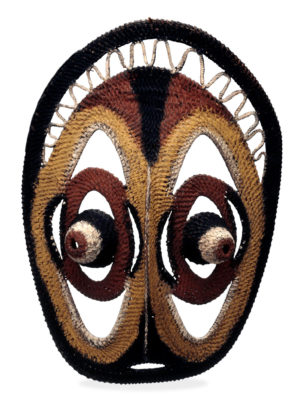
Yam mask or Bapamini, made by Gwaikwavi Wakaaniambi, fiber, and pigment, made by Wosera Abelam, Papua New Guinea, 34 cm high © Trustees of the British Museum
The Wosera Abelam people live on forested plains in northern Papua New Guinea. They link spiritual well-being and material survival in one cosmology, which focuses in part on their staple vegetable crop: yams. At harvest, they decorate large yams of the variety Discorea alata (which can grow to between two to three meeters long). The decorated yams are displayed publicly and are exchanged between men.
When decorated, the yams represent ancestral spirits called nggwal. Nggwal do not act by themselves but must be encouraged with offerings, chants, and decorations. The decorations used on long yams like this include masks, shell valuables, feathers, and paint. This mask was therefore made to decorate a long yam, and to enable it to embody a nggwal spirit.
© The Trustees of the British Museum
Additional resources
More from Smarthistory on Abelam society’s religion and yams.

